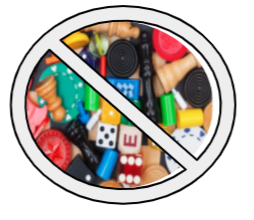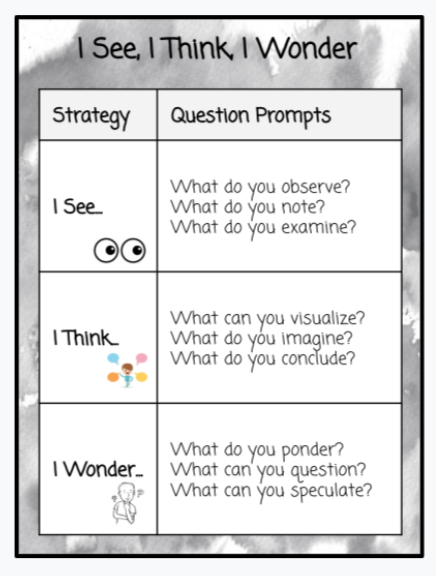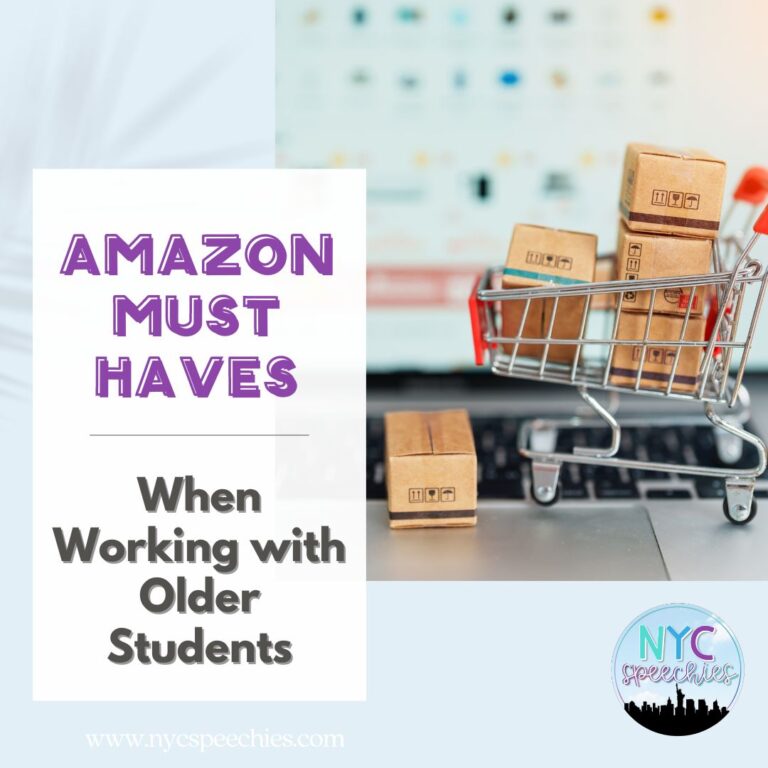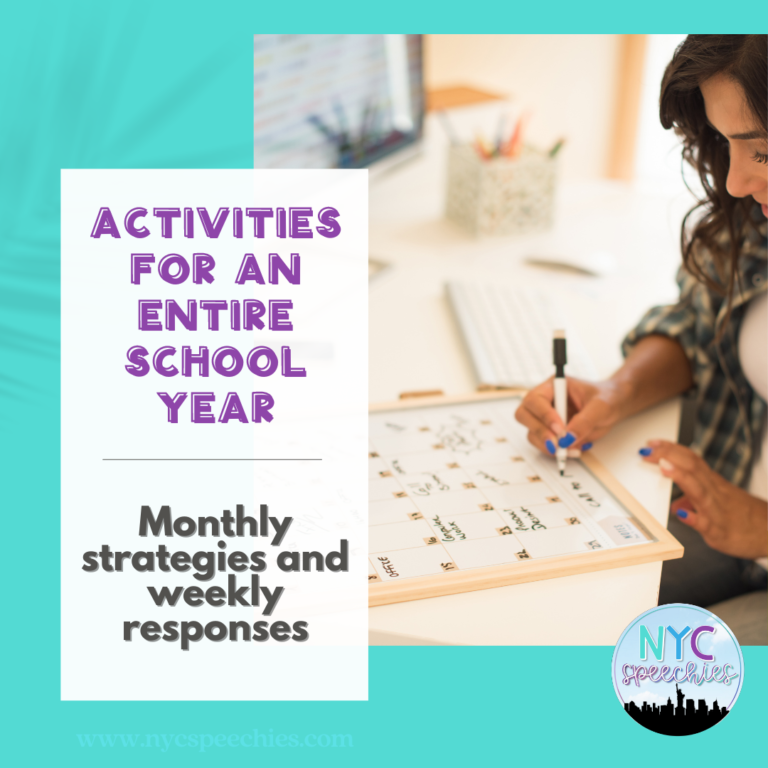Getting In the Spirit: Incorporating Holidays and Seasons Into Your Therapy Sessions
 Ever start working with a group of students and the first words out of their mouths are, “Can we just play a game today?” The high school student translation of this statement is, “Can we do nothing today?” This is a constant struggle we have when working with older students, especially before a holiday or vacation break. We all know the struggle is real and there is no game playing during speech and language.
Ever start working with a group of students and the first words out of their mouths are, “Can we just play a game today?” The high school student translation of this statement is, “Can we do nothing today?” This is a constant struggle we have when working with older students, especially before a holiday or vacation break. We all know the struggle is real and there is no game playing during speech and language.

We have the no-prep solution, both for remote learning and in-person learning. All you need is a group of students who are willing to have fun, oh and maybe a computer if they are learning remotely.
One of our favorite strategies to promote both oral and written language is the ‘I See, I Think, I Wonder’ strategy. This strategy helps our students analyze visual images including pictures, photographs, cartoons and even memes. The students are expected to list out what they see in the image, what they think is going on (including their interpretation of the image), and anything they might question or wonder about the picture. We pair this strategy with over 20 visual images for each season and a variety of holidays. We have a picture analysis resource for all four seasons: Fall, Winter, Spring, and Summer. We also have a picture analysis for some holidays including Valentine’s Day and Thanksgiving. We’ve got you covered for a great activity for any time of the year, especially before a break, vacation, or a holiday.
 We love the flexibility this resource provides. Students can write or type their responses before sharing with the group or skip the writing/typing and just share their answers verbally with their peers. There are so many visuals to choose from, allowing you to assign different pictures to each student during independent work and then come together as a group to share each of their responses. When we do this before a break or holiday, the students do not even realize we are still targeting their individualized goals. These visual images can focus on so many speech and language goals including: vocabulary, figurative language, making predictions, analyzing information, interpreting language, descriptive writing, and so much more! The best feeling is when we show our students the cartoons and they start laughing right away. Who doesn’t love the endless fun of a good snowman cartoon?
We love the flexibility this resource provides. Students can write or type their responses before sharing with the group or skip the writing/typing and just share their answers verbally with their peers. There are so many visuals to choose from, allowing you to assign different pictures to each student during independent work and then come together as a group to share each of their responses. When we do this before a break or holiday, the students do not even realize we are still targeting their individualized goals. These visual images can focus on so many speech and language goals including: vocabulary, figurative language, making predictions, analyzing information, interpreting language, descriptive writing, and so much more! The best feeling is when we show our students the cartoons and they start laughing right away. Who doesn’t love the endless fun of a good snowman cartoon?

Another fun seasonal/holiday product line is the ‘Would You Rather’ game. Only this version does not include a basement of friends and instant embarrassment after sharing your answers. Each resource either has 10 or 20 “Would you rather” statements. This is a great prerequisite for learning how to make a claim with supporting evidence, as well as supporting your opinion with reasons. “Would you rather go to a Halloween party with friends or go trick-or-treating to get candy” – now the students have to choose one side of the argument and explain why. Most students say get the candy, can you blame them?
We haven’t even shared the best part about our Would You Rather resources…they are completely FREE! All you have to do is download and start using them with your students. We provide three ways to use these statements with your students: they can share their opinions verbally, they can independently type their responses into the slides, or you can share one packet with a group of students in Google Drive so they can work in the same document simultaneously. They are all fit to 8.5×11 inch paper so you can print for use in the therapy room, too. We have ‘Would You Rather’ resources for Fall, Halloween, Thanksgiving, Winter, New Year’s, Valentine’s Day, St. Patrick’s Day, Spring, Earth Day, Patriotic Holidays, and Summer.
We know firsthand the daily joys and struggles of working with the older students. We recognize how hard it is to keep these older kids engaged and motivated, while also targeting their speech and language goals. These seasonal and holiday activities are simple and effective resources to use when you want to change things up and give your students a break from academic related work. You CAN make therapy fun, without having to offer games and snacks! The best part is they are still working on strategies they can transition into the classroom without even realizing it. Sometimes you need a few tricks up your sleeve to survive a year with teenagers.






